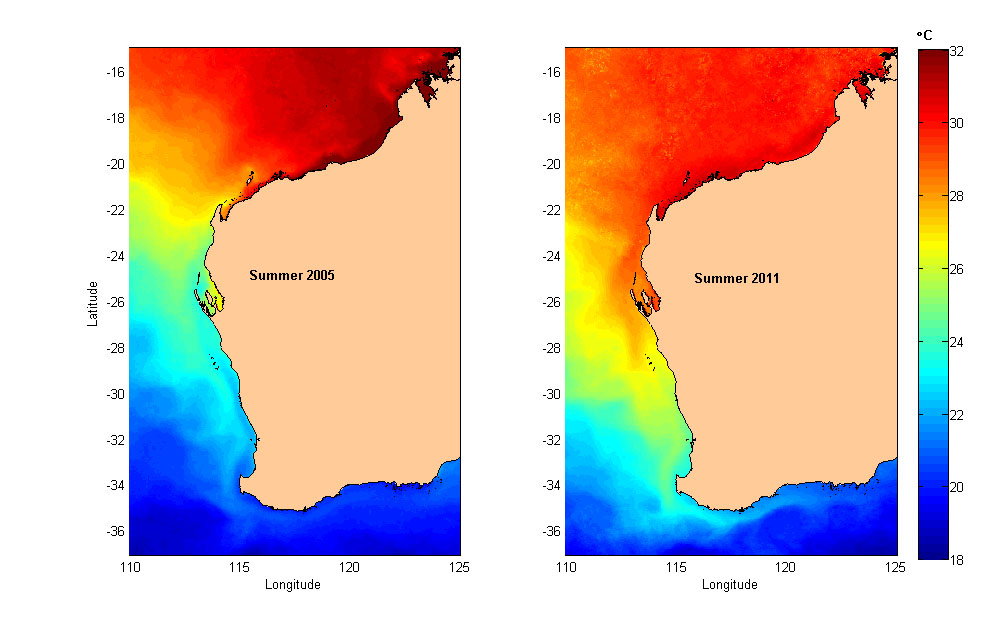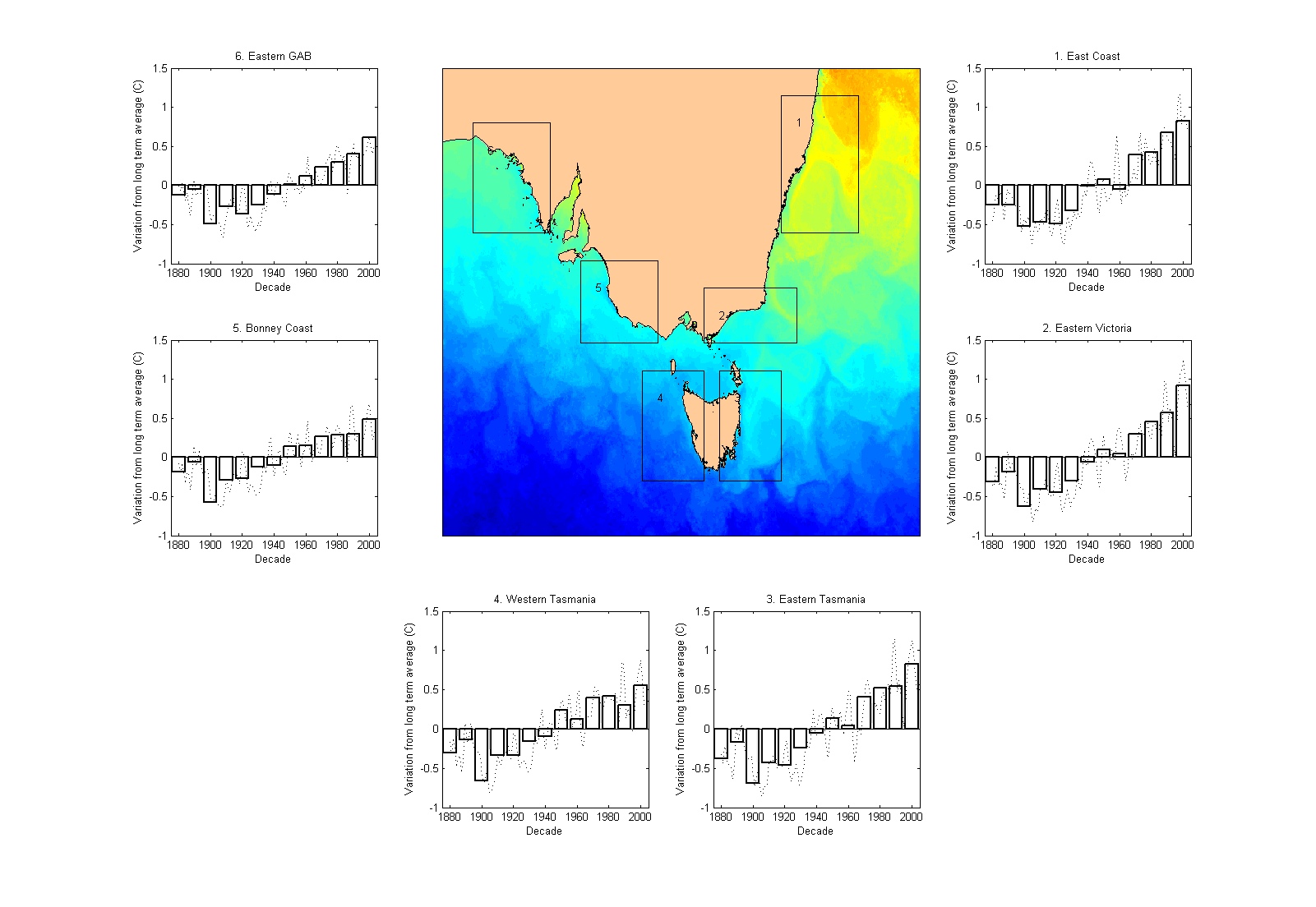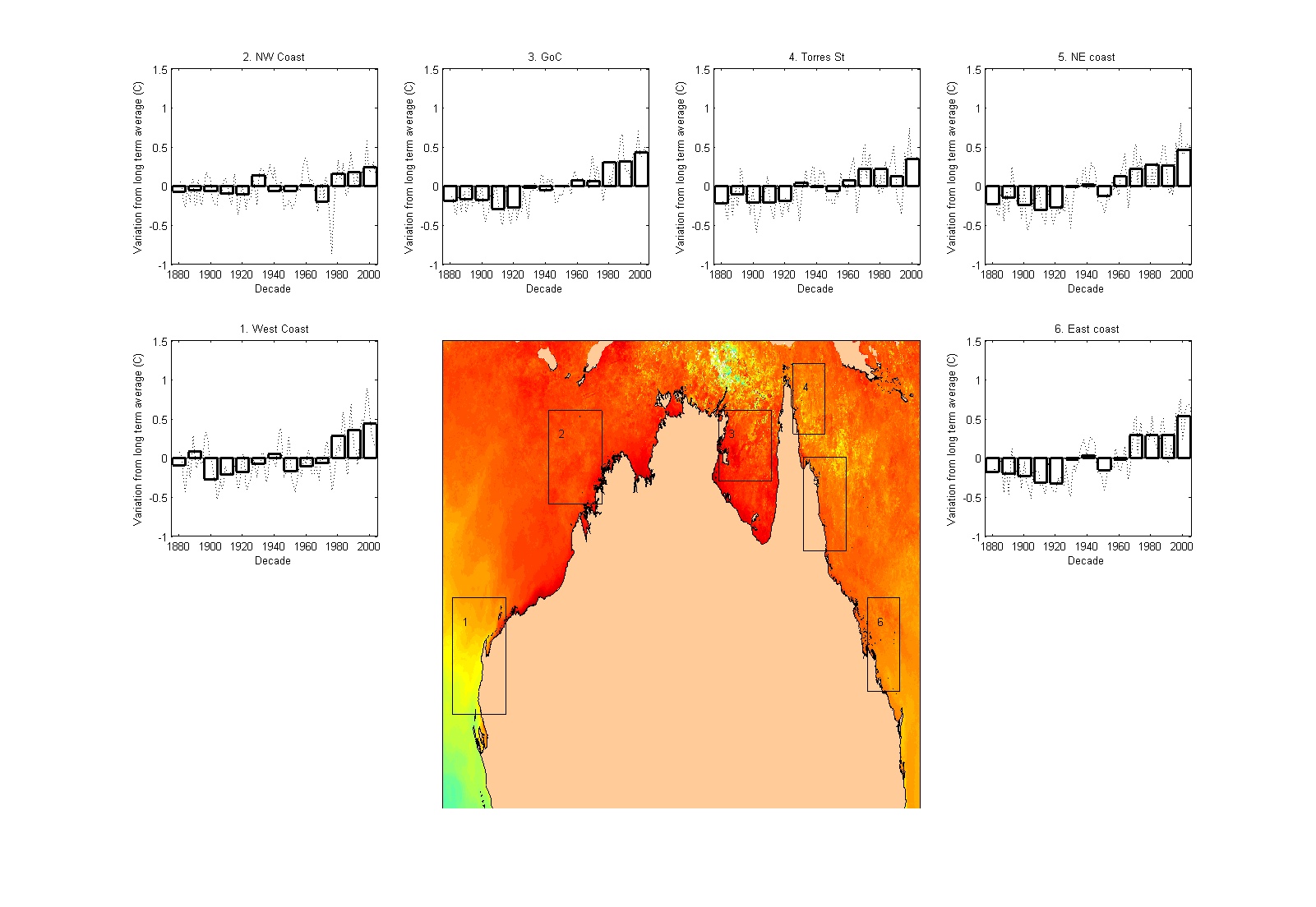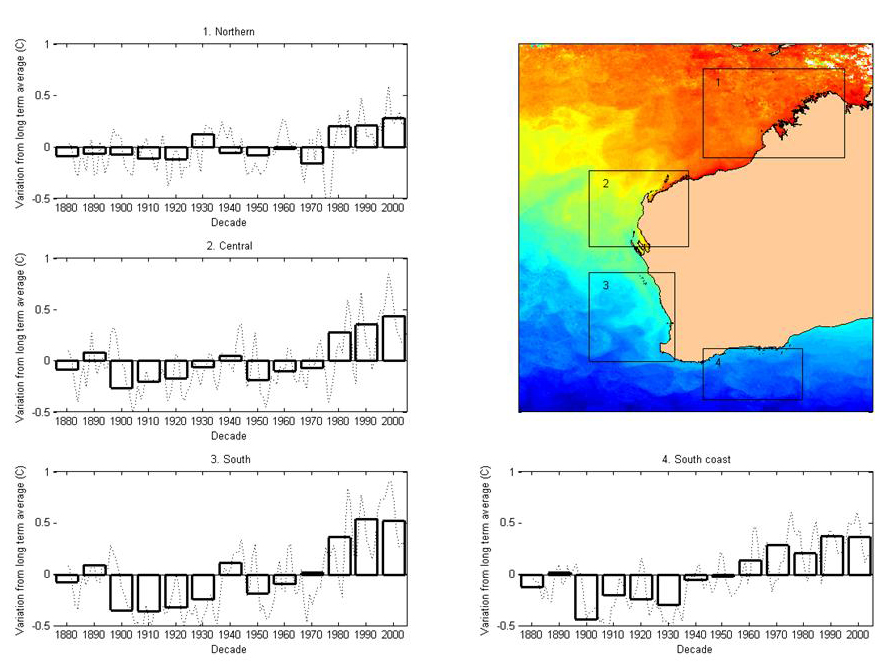Sea temperatures and climate change
Dr Alistair Hobday and Jason Hartog (CSIRO).
Coastal waters in many locations around Australia are warming up, according to the CSIRO Marine and Atmospheric Research.
Most Australian seas have increased in temperature since the 1880s, with some regions changing more than others. This is illustrated in the CSIRO satellite images below, which compare sea temperatures around Australia over time.
Queensland coastal waters have already warmed about 0.6°C above the long-term average since the 1960s; while South Australian seas have warmed less than 0.5 degrees.
Sea surface temperatures have risen by about 0.8°C on the east coast of Tasmania, southern NSW and eastern Victorian seas compared to the 1960s. These regions are part of the “Tasman Sea hotspot” for ocean warming.
The warmer waters along Australia’s east coast, especially in 2012, were caused by the extension and increased strength of the East Australian Current (EAC) bringing warmer water from the north. The EAC is likely to strengthen in the future with a changing climate. This will extend warm waters further south and change the tropical and subtropical extents of coastal environments and marine habitats.

An example of a marine warming event in Western Australia. Left image: A typical summer for WA in 2005. Right: The unusually warm summer (and autumn) in 2011, which became known as a marine heat wave (CSIRO).
A few degrees rise in water temperature over time doesn’t sound like much. But even small changes impact the distribution and physiology of fish and marine life. Marine species have their own set of conditions they prefer to live in, like temperature and pH. Some biota will move (if they can) - also known as shifting their range - in search of these conditions if things get too hot at home. Others may adapt well to warming seas; while some will not survive in the changing conditions.
For example, the Common Sydney Octopus (Octopus tetricus), an important commercial species usually found in NSW and southern Queensland seas, has been spotted in Victorian waters in recent years and could well be slowly on the move south.
On the other side of the country, Western Australia has experienced variable coastal warming over the past 20 years: on average less than a 0.5°C increase. This is linked to natural variability rather than long-term change.
Yet Western Australia’s unusual “marine heatwave” in 2011 saw central and southern coastal temperatures rise more than three degrees above average during the March-April period. This heatwave was associated with the death of algae (e.g. seagrasses), fish and crays; and some coral bleaching. And WA fisheries received more reports of subtropical species like whale sharks, Spanish mackerel, emperor species and damsel fish species that were seen further south than they’re usually found.
WA’s south-flowing Leeuwin Current is likely to weaken over the coming century. Even so, ocean warming is expected to drive southward range shifts in marine biota and there may be more frequent extreme temperature events.
Warmer waters lead to changes in biodiversity, population connectivity, ocean productivity and the distribution of pelagic species (those living in the open sea), in particular.
Another scenario is playing out in South Australia, which has experienced a relatively weak ocean warming of less than 0.5°C over the last few decades. South Australia’s strong coastal upwelling brings cool water to the surface and buffers the impact of warming even if atmospheric temperatures have risen.
As such, marine range shifts have not been as clear cut in SA waters. SA fisheries have had more recent reports of the blue swimmer crab (Portunus pelagicus) further south than it is usually found. And there has been a change in the numbers of some species such as the Sea Lion (Neophoca cinerea) and different types of kelp.
But ocean warming is not the only reason why marine life move away from their usual homes. Other factors like pH, competition for food, salinity, currents, fishing pressures, storms and pollution – to name just a few – will also influence species distribution. And ocean acidification, where man-made carbon dioxide is absorbed by the ocean making it more acidic, will alter the chemical environment of all habitats.
Given these factors, and the general trend of warming seas, it’s no wonder some marine life are being spotted further away from their usual territory along Australia’s coastlines. Possibly looking for cooler waters and their preferred marine conditions?
What about warming in the seas near you? Click on your region below for sea temperature monitoring by the CSIRO, images and potential impacts on marine life:
Queensland
New South Wales
Victoria
Tasmania
South Australia
Western Australia
(Edited by Yvette Barry)
Sea surface temperatures since the 1880s (CSIRO)
Eastern and southern Australia:

Northern Australia:

Western Australia:

Acknowledgement: Data shown in these images represent the temperature of water at the surface and are collected by satellite, and processed at CSIRO by Chris Rathbone and colleagues. Further information is available at http://oceancurrent.imos.org.au/. Images prepared by Alistair Hobday and Jason Hartog (CSIRO).











